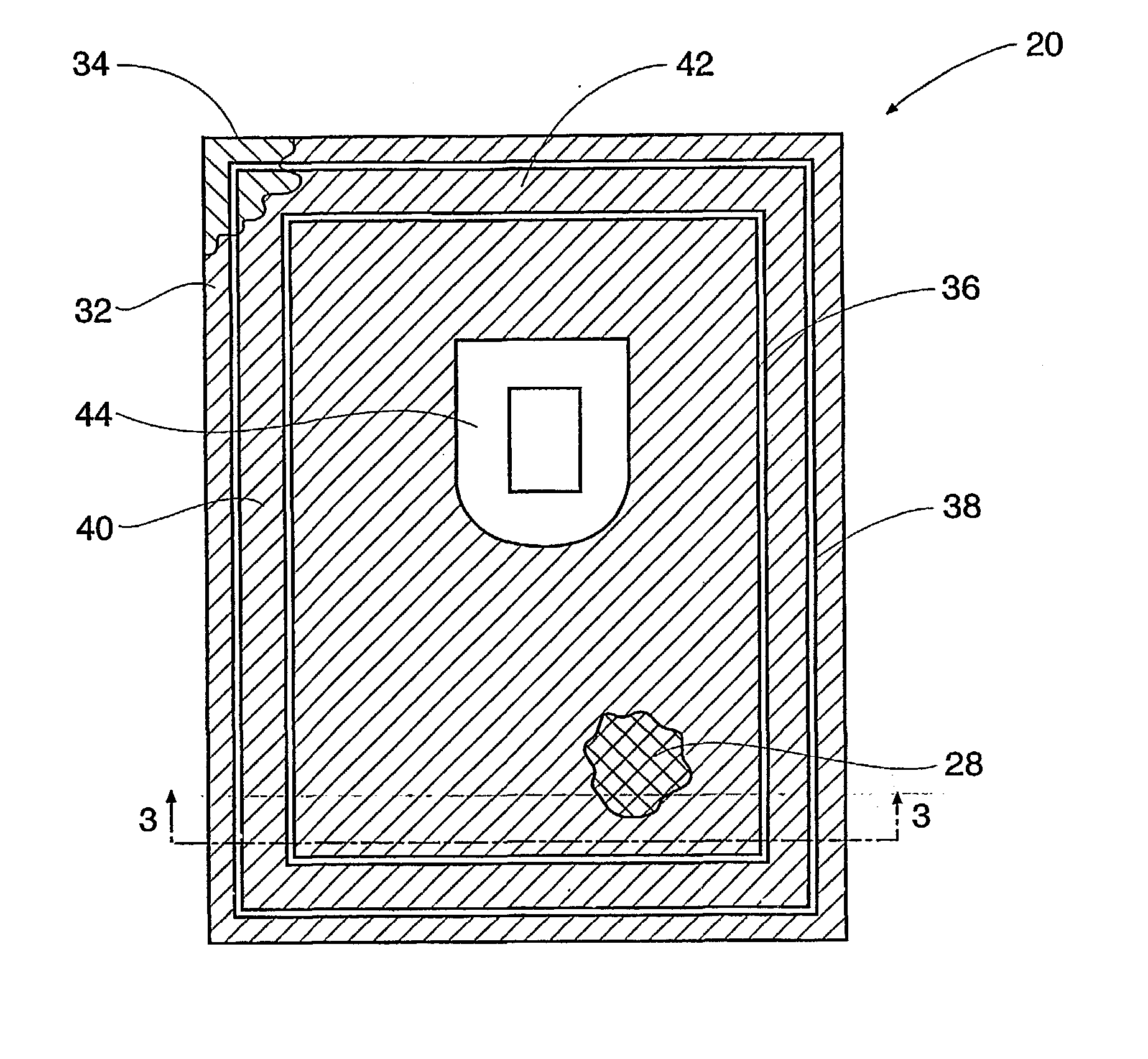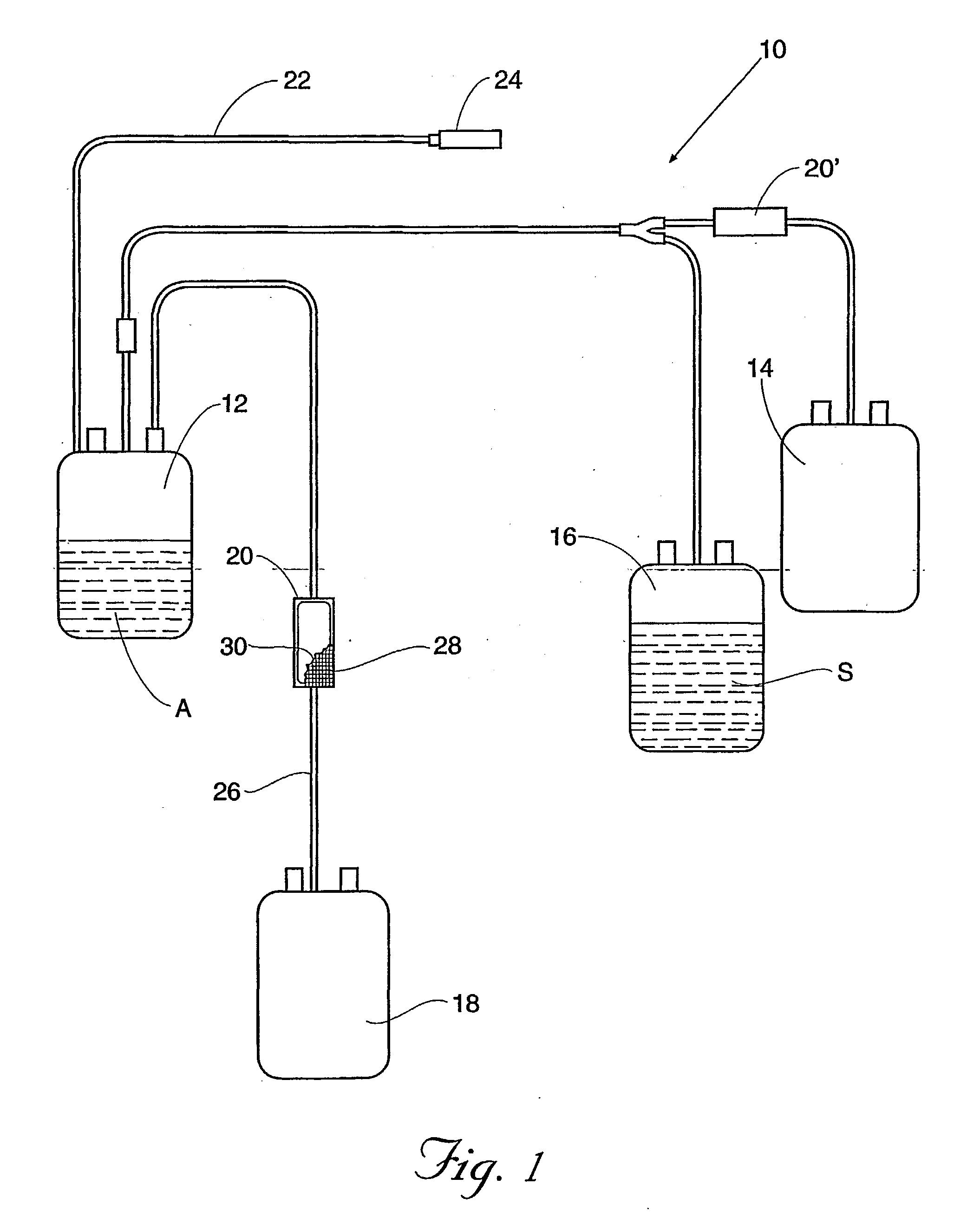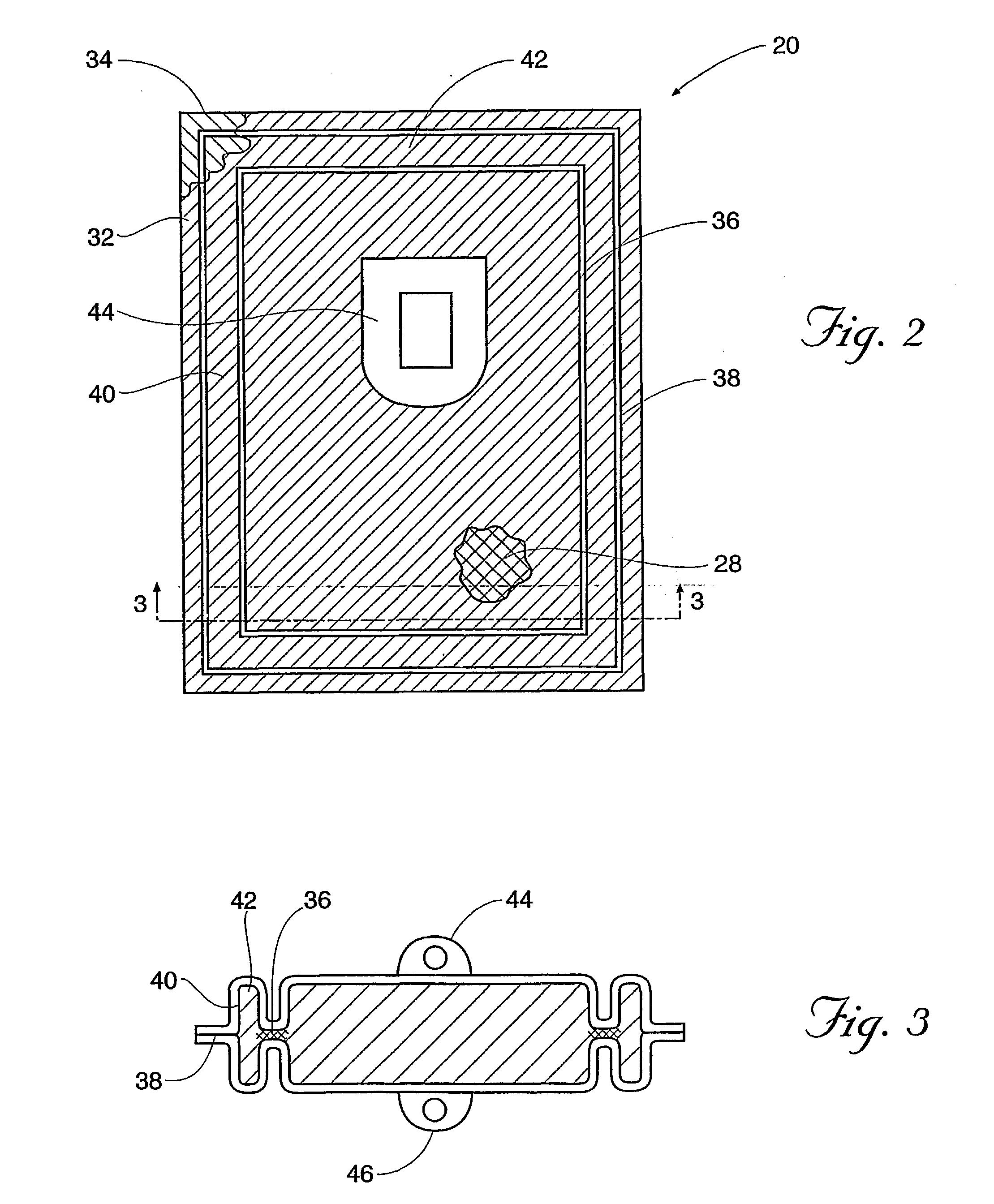Blood filters, blood collection and processing systems, and methods therefore
a filter and blood collection technology, applied in the direction of multi-stage water/sewage treatment, instruments, separation processes, etc., can solve the problems of affecting the quality of blood collection, the filter is subjected to centrifugation, and the blood separation set cannot be easily applied to the filter, so as to achieve the effect of increasing the loss of raw materials
- Summary
- Abstract
- Description
- Claims
- Application Information
AI Technical Summary
Benefits of technology
Problems solved by technology
Method used
Image
Examples
example 2
[0115] The filter element c was cut into a size of 82 mm.times.65 mm. The first seal area was welded so that the width of the protruding filter element g is 0.5 mm.
[0116] After subjecting the first seal portion to the leakage inspection, filters were manufactured by the same method as in Example 1, except that the flexible vessels b and d were welded so that the width of the non-seal area h is 1 mm. The results of the leakage test by the method described above are shown in TABLE 1.
example 3
[0117] Example 1 was followed except that the filter element was cut into 87.times.70 mm size so that the width of step-out portion (g) was 3 mm and the width of nonsealed area (h) was 6 mm. The difference between the greatest width and the smallest width of protruding filter element was 1 mm. The results of leak tests before and after sterilization / centrifugati-on are shown in Table 3.
example 4
[0118] Example 1 was followed except that the filter element was cut into 89.times.72 mm size so that the width of protruding filter element was 4 mm and the width of nonseal area (h) was 7 mm. The variation of the width of protruding element was 1 mm. The results of leak tests before and after sterilization / centrifugation are shown in Table 3.
PUM
| Property | Measurement | Unit |
|---|---|---|
| gap width | aaaaa | aaaaa |
| width | aaaaa | aaaaa |
| width | aaaaa | aaaaa |
Abstract
Description
Claims
Application Information
 Login to View More
Login to View More - R&D
- Intellectual Property
- Life Sciences
- Materials
- Tech Scout
- Unparalleled Data Quality
- Higher Quality Content
- 60% Fewer Hallucinations
Browse by: Latest US Patents, China's latest patents, Technical Efficacy Thesaurus, Application Domain, Technology Topic, Popular Technical Reports.
© 2025 PatSnap. All rights reserved.Legal|Privacy policy|Modern Slavery Act Transparency Statement|Sitemap|About US| Contact US: help@patsnap.com



